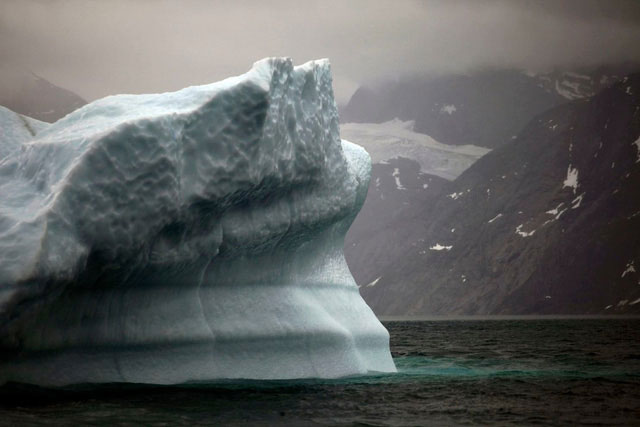Every second 14,000 tons of water flows into the sea because the Arctic ice melts
The rapid melting rate in the Arctic makes sea levels rise, threatening millions of people around the world.
New research published in the journal Environmental Research Letters shows that melting ice in the Arctic causes every 14,000 tons of water to flow into the oceans every second.
The study is the work of scientists in Chile, Canada, USA, Netherlands and Norway over the past 47 years.
The study was carried out by combining the old measurement methods from 1971 with the Earth's gravity-based measurement method for the loss in the Arctic through GRACE satellites of the Aviation Authority. and the US universe (NASA).
The results show that the largest agents in the world make ink
The phenomenon of ice melting at increasing speed has caused the ocean level to rise by more than 1mm per year. Since 1971, this number has reached 2.3cm.

Glaciers in the Arctic melt fast are the largest agents in the world that cause sea levels to rise - (Photo: AP).
In the 2005-2015 period, the total amount of ice lost in the Arctic was 447 billion tons / year, equivalent to 14,000 tons of water every second.
During the period 1986-2005, the amount of melting ice was estimated at 5,000 tons / second. This means that the rate of melting in the Arctic in 2005-2015 is nearly three times faster than in the 1986-2005 period.
As of now, rapid warming in the Arctic is also far ahead of Antarctica. However, the biggest problem is that the rate of melting in both areas seems to be moving faster simultaneously, making the sea level rise more and more in the coming decades.
Specifically, a recent separate study showed that the rate of ice melting in Antarctica also tripled in just a decade. In particular, there are 219 billion tons of melting ice per year in the period of 2012-2017 only.
If you sum it up at both poles, about 666 billion tons of ice each year melt into water that flows into the oceans.
Professor Jason Box of the Danish and Greenland Geological Research Institute (GEUS) stressed that it is not until the end of the century that humanity can see issues related to sea level rise. Those problems have been revealed right now.
The melting rate in the Arctic has been three times faster since 1986. The amount of ice floating here is also declining rapidly, approaching the rate of ice melting on land.
Previously, Finnish scientists' research also showed that increasing global temperatures are melting the permafrost in the Arctic , threatening 70% of the infrastructure in this area. As a result, by 2050, about 3.6 million people may be affected by damaged infrastructure.
Not only that, nearly half of the important oil and gas fields in the Arctic also have "high risk of being affected". Even, even if global leaders can keep the commitments made under the Paris Agreement on climate change, the risk for infrastructure in the Arctic until 2050 remains the same. .
However, keeping the Earth's temperature below 2 degrees Celsius above pre-industrial levels seems to be able to reduce the risks of infrastructure that could be devastated after 2050.
The permafrost is frozen, though not permanent, as its name suggests, found mainly in the Northern Hemisphere. This layer covers a wide belt between the Arctic Circle and Northern forests, including Alaska (USA), Canada, Northern Europe and Russia. This soil layer is less common in the Southern Hemisphere.
- Water flows on Mars - the discovery changes the cosmic perception
- Japan: More than 1000 tons of contaminated water flows into the sea
- Ice melts, the sea is wide and the Arctic is in danger
- Find boiling water in the middle of the cold Arctic
- For the first time in the world Russia explored the Arctic seabed
- Iceberg - Solution for the water resource crisis
- The Arctic emits 62 billion tons of carbon in the 21st century
- Arctic dinosaurs are only 20 years old
- 10 super abilities of the human body
- What kind of bacteria can kill hundreds of millions of people coming out from the North Pole?
- Huge warm water tank is
- Discovering 300 billion 'objects' in the Arctic, harming the Earth
 Is the magnetic North Pole shift dangerous to humanity?
Is the magnetic North Pole shift dangerous to humanity? Washington legalizes the recycling of human bodies into fertilizer
Washington legalizes the recycling of human bodies into fertilizer Lightning stone - the mysterious guest
Lightning stone - the mysterious guest Stunned by the mysterious sunset, strange appearance
Stunned by the mysterious sunset, strange appearance